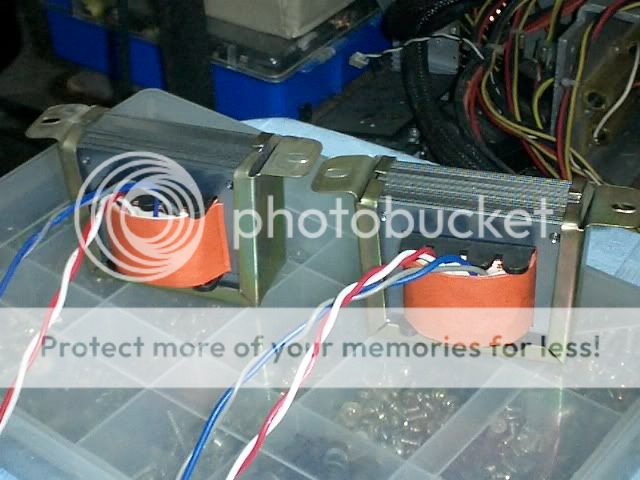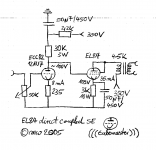Direct Coupled
Direct Coupled offer advantages of capacitor weakness (best coupling cap is no cap). But during building you must pay attention since motorboating behaviour could be an issue. not to mention the risk when driver tube fails, that could bring the output tube to death too.
I have built one EL84 direct coupled, it sound almost like RH84 but RH84 has more Bass while DC-EL84 has brighter (more open?) and detailed sound.
Penk
Direct Coupled offer advantages of capacitor weakness (best coupling cap is no cap). But during building you must pay attention since motorboating behaviour could be an issue. not to mention the risk when driver tube fails, that could bring the output tube to death too.
I have built one EL84 direct coupled, it sound almost like RH84 but RH84 has more Bass while DC-EL84 has brighter (more open?) and detailed sound.
Penk
Toober said:What do you think about DC coupled amplifiers?
I tend to favor getting rid of as many coupling capacitors as possible. Every time you add another AC coupled stage, you're also adding a phase shifter as well as a high pass filter. Those extra phase shifts can compromise stability under feedback, and can also compromise bass performance. I also like DC coupled cathode follower final grid drivers to eliminate distortion under transient overdrive, get the slew rate up, and force a few extra watts out of a class AB1 design that can slip partially into ClassAB2. I did an 807 design with a nominal 26.5W with a v(i)= 45Vp-p (just puts the 807 Vgk(max)= 0V). With 35W Hammonds, I can push that to over 30W because the cathode follower drivers can get that little bit extra out of it by taking the grids positive. Of course, this also requires fixed bias, which automatically results from the DC coupled cathode followers.
I also like lots of extra "head room", and the design maxes out when the OPTs saturate, not when any stage clips.
Of course, I do high fidelity, so very little of that will apply to a gee-tar amp.
Toober said:
i have one, uses a 7/8 inch square stack, on a bobbin for 7/8 inch sq. core...has 5400turns #34 magnet wire on primary, 3 layers, wired in series, then two layers #30 awg for 216 turns paralleled, so this OPT has 5 layers interleaved, for the gap i use file folder cardboard material.. hope this helps...good luck!

- Status
- This old topic is closed. If you want to reopen this topic, contact a moderator using the "Report Post" button.
